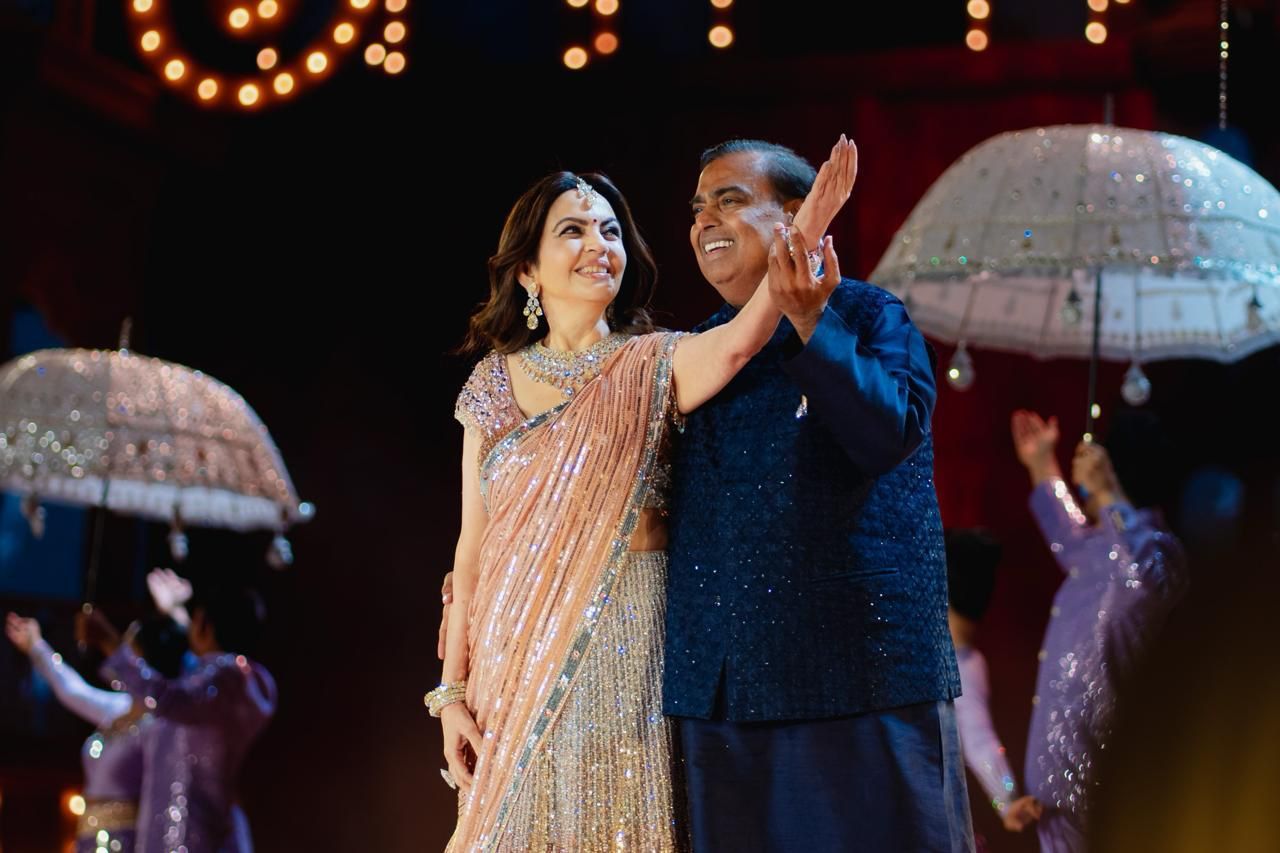In 2013, when a journalist asked Shah Rukh Khan if we would ever see the three Khan superstars of Bollywood — him, Aamir and Salman — in a film together, he jokingly replied, “One would have to sell their undergarments while trying to sign the three of us,” indicating how expensive and difficult this collaboration would be. When these three come together at an event the cameras are always pointed toward them. So when the trio performed at the pre-wedding celebrations of Anant Ambani — the youngest son of Indian industrialist Mukesh Ambani, Asia’s richest man and among the world’s top billionaires — it was a pop culture moment that Indians will remember for years to come. It also highlighted the immense social capital of the Ambanis, because the Khans, each of them actors who can easily command over $12 million per film, reportedly performed for free at the event.
The Khans’ dance to the Oscar-winning song “Naatu Naatu” was not the only big moment at the three-day gala. The Ambanis got Rihanna to perform in India for the first time. Punjabi singer Diljit Dosanjh, who performed at Coachella last year, also brought the house down, as did Senegalese-American singer Akon, in addition to a host of popular Bollywood singers, stars and cricketers. Altogether, more than 10 singers performed over three days, a lineup worthy of an international festival. High-profile guests such as Bill Gates, Mark Zuckerberg, Ivanka Trump, Qatar’s Prime Minister Mohammed bin Jassim Al Thani, along with Bhutan’s King Jigme Khesar Namgyel Wangchuck and Queen Jetsun Pema were also in attendance.
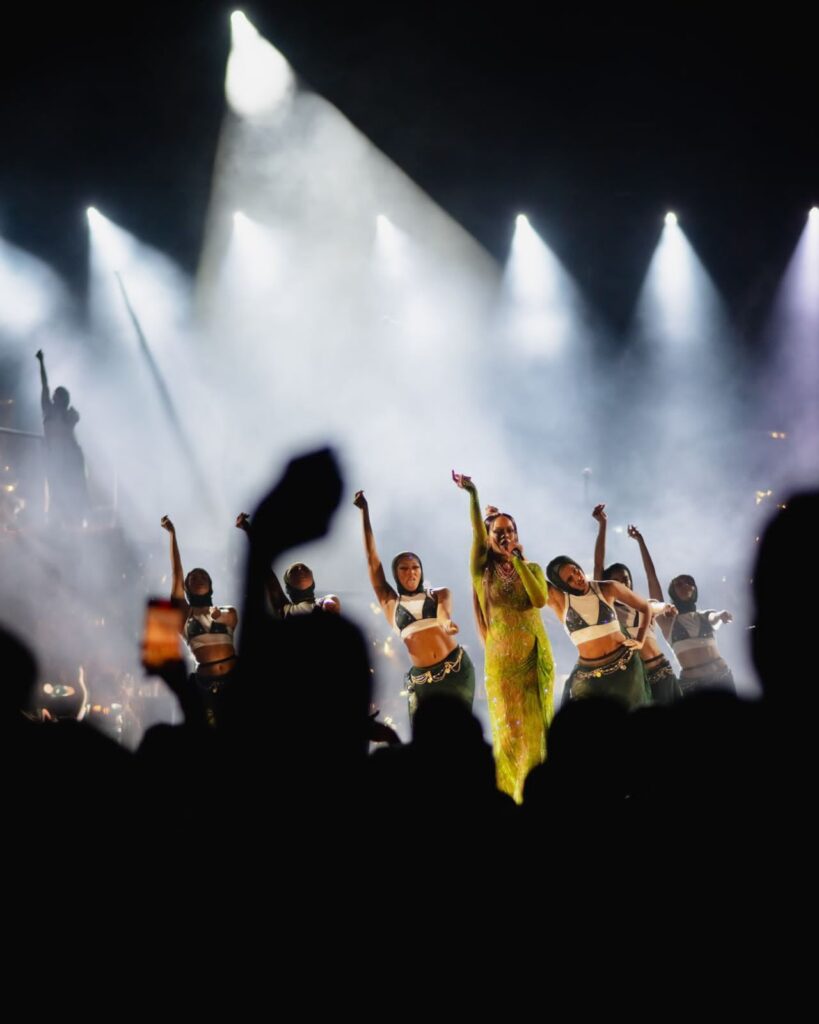
Radhika Merchant, Anant’s fiancee and daughter of billionaire Viren Merchant, wore a custom Versace gown similar to one worn by American actor Blake Lively for the 2022 Met Gala. Anant’s mother, Nita, turned heads with her emerald necklace worth over $60 million, as did his sister, Isha, with her jewel-encrusted blouse.
The catering, too, attracted media attention. Twenty-one chefs prepared a mouthwatering array of dishes: 75 different dishes for breakfast, more than 200 for lunch, nearly 300 for dinner, and 85 for the midnight meal.
For three days, all eyes were on the quaint coastal city of Jamnagar, whose small domestic airport was granted international status for 10 days to facilitate the hundreds of private jets flying guests in and out of the city. Candid moments, outfits, and song and dance performances made headlines, and people were glued to social media for days. The Ambani pre-wedding bash was all Indians wanted to talk about.
News publications the world over were also drawn to the festivities that reportedly cost $152 million. Unable to make sense of this display of wealth at a time when quiet luxury is trending, The Guardian called the event “an ode to excess” and “unashamedly flashy,” while the U.K.’s Daily Mail took note of the poverty and income inequality in Jamnagar and the rest of India.
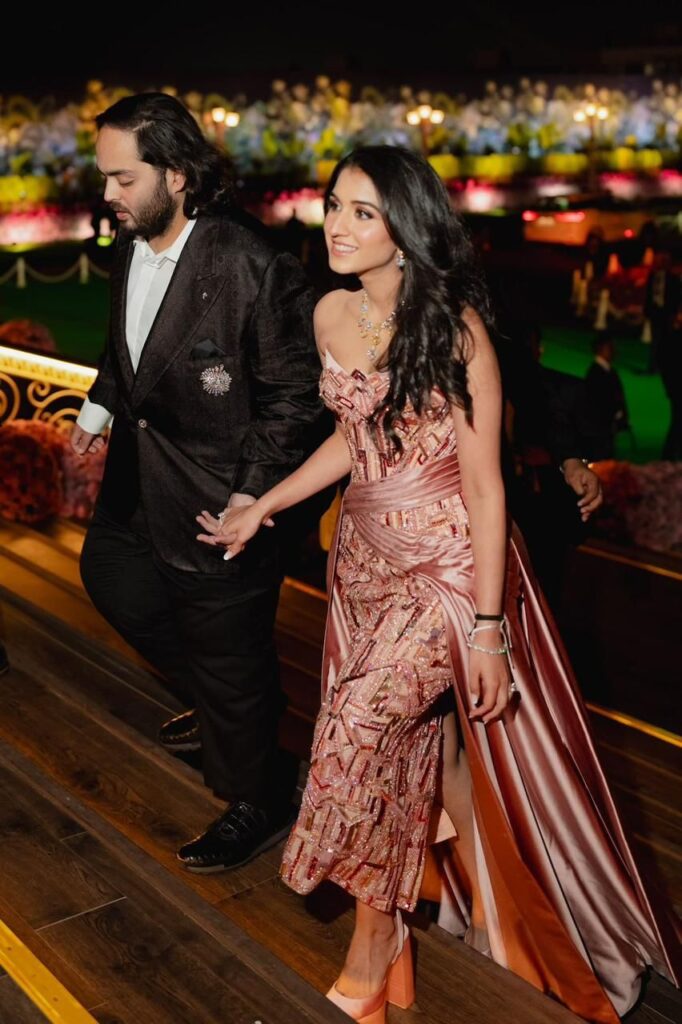
For Indians, the only unusual aspect of the event was that this was a pre-wedding gala and not the actual wedding, which will be held in the summer. They weren’t surprised at the ostentatiousness, given this is the norm for weddings in the country.
Weddings are a significant indicator of one’s status and wealth in Indian society. Lavish weddings are aspirational. And in the age of social media, they provide an opportunity to display one’s identity and lifestyle. Exotic destinations, high-end venues, decor, designer outfits, jewelry, menus, guests, celebrity performances — all contribute to it, and Indians love to be in the spotlight for it. But it’s not just about what couples spend. “How much you can afford to waste during a wedding also signals your status,” explained Guwahati-based sociologist Moureen Kalita.
For the Ambanis, the celebrations became a “projection” of their “national power,” wrote Indian academic Pratap Bhanu Mehta in The Indian Express. “The idea that one can get anyone, no matter how powerful, to show up and make them dance, is quite a show of power. You might be secretary of state or the world’s greatest star. But you still show up to an event if the Ambanis summon,” he said. In 2018, when Mukesh’s daughter Isha was getting married, Hillary Clinton attended the pre-wedding festivities in Udaipur and Beyonce performed.
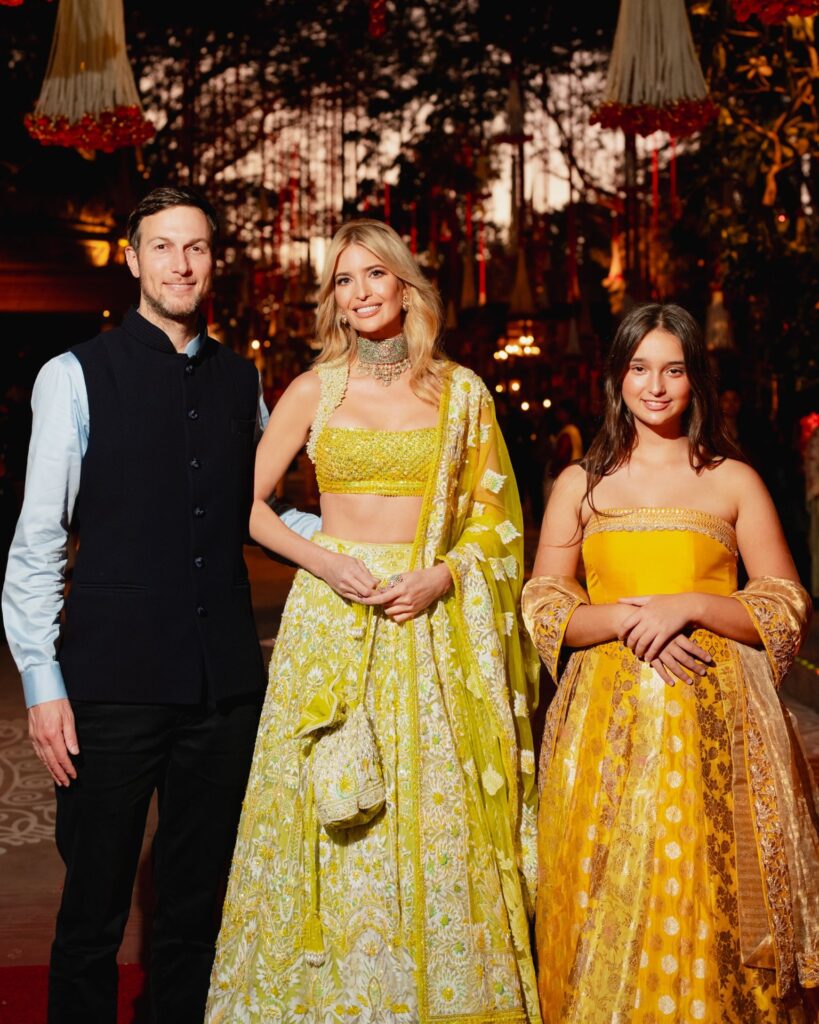
To Leher Kala, a columnist on culture and society for The Indian Express, the recent pre-wedding festivities felt “fantastical.” “There are very few people in India, in fact anywhere in the world, who have that kind of social capital,” she said. “Indians don’t have very good examples of people who live life king-size or legacy billionaires who have houses in Capri and go to Ibiza for holidays. We don’t have icons who spend. … So the Ambanis are setting a new bar. They want to celebrate larger than life. Westerners have done it for centuries. So they are probably the first ones in India living like the new royals,” she said.
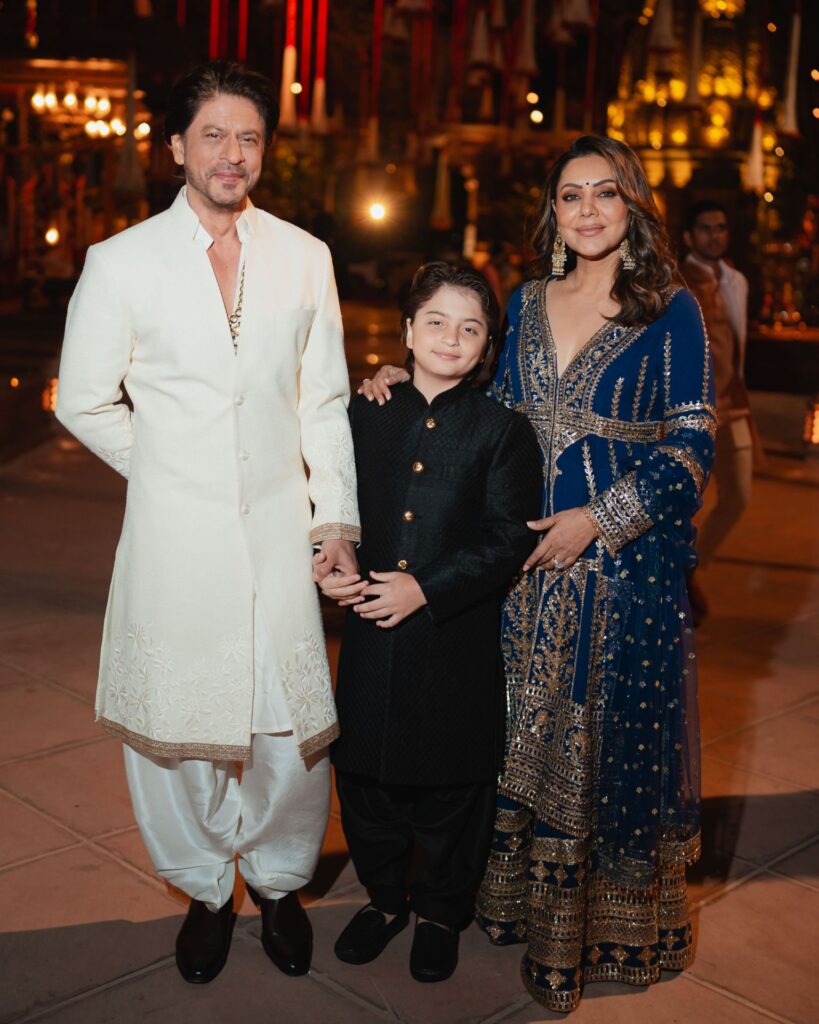
Hence, for many Indians, aware of the contradictions and inequalities that exist in the country, the pre-wedding was also a moment of pride: So what if India isn’t rich, it has the world’s richest. “To have Rihanna and Akon perform, and Bill Gates and Mark Zuckerberg in attendance — it’s a signal to the world,” said Kala. “That they don’t just count themselves amongst the Birlas and the Adanis, they’re now the international super-rich, even in the way they entertain.” The occasion and opulence of the wedding provides them with the perfect opportunity to do that, where they blend the modern with the traditional and project to the world how they see themselves.
In Indian society, individuality is not only defined by one’s accomplishments and character but also by one’s circle of acquaintances, friends and the number of important and influential people one knows. Indians also derive a great deal of validation from how people in society view them. People make personal and familial decisions with that in mind.
Even a small farmer would want to throw as lavish a wedding party as his finances would allow. While researching conspicuous consumption via wedding celebrations in rural India in the early 2000s, economist Vijayendra Rao and scholars Francis Bloch and Sonalde Desai came across a farmer who owned 2 acres of land and threw a big party for his daughter’s wedding. When asked what his motivation was, he said that since the groom was educated with a job in the city and belonged to a landowning family, he wanted to “show” the elevated social status that he had acquired by association.
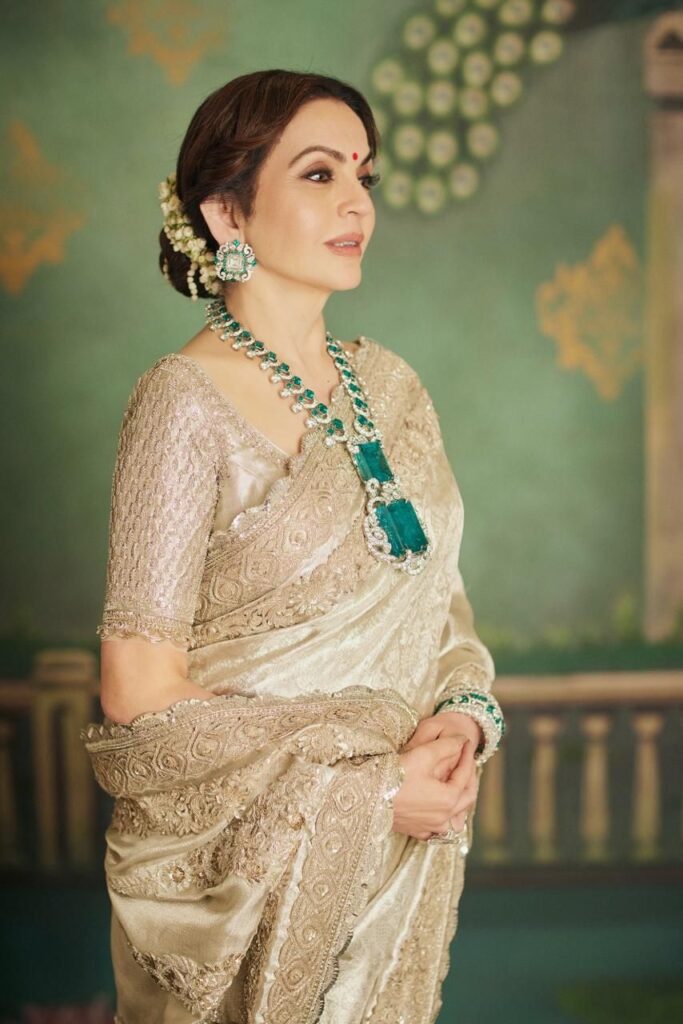
It’s not that Indians are unsurprised at the scale and glamour of lavish weddings. But a wedding is an occasion when Indians genuinely allow themselves to splurge and indulge without judgment. Guided by celebrity trends and social media, the growing scale of Indian weddings has also led to a thriving industry, which is often called “recession-proof” and “weather-resistant” because come rain or shine, weddings don’t stop in India.
Of course, during the pandemic people had to reconcile with the new reality, and the typical, big Indian wedding was scaled down, making way for intimate weddings and home ceremonies. However, it was a culture shock for Indians and prompted many to postpone their nuptials.
The wasteful expenditure that has become more common at weddings is defended by pointing to the number of jobs that they create. The wedding industry includes a wide range of subindustries and service providers from wedding planners, decorators, caterers and photographers to venue and hospitality managers, designers, entertainers, makeup artists, and light and sound technicians. A big-ticket wedding is said to employ between 500 and 700 people, and wedding budgets can range from $6,000 to $120,000 — and beyond. According to some estimates, the wedding industry in India is worth $50 billion a year, with an annual growth rate of 25% to 30%. Industry insiders believe that India may hit $75 billion during the 2023-2024 wedding season.
The popularity of destination weddings has also led to a rise in tourism. Popular destinations in Goa and Rajasthan, and cities such as Agra and Mussoorie, are also sought after for hosting weddings. The rich and famous take it a notch higher with exotic destinations in countries such as Turkey, Thailand, Malaysia, Portugal, Oman or France. Locations such as Lake Como, Tuscany and the Amalfi Coast in Italy are particularly popular for Indian destination weddings. The Economic Times estimates that a two-day destination wedding in a five-star hotel at an Indian location for 200 guests costs between $365,000 and $600,000, and a wedding at a foreign destination can be more than double that.
With the amount of money wealthy Indians were spending on their destination weddings abroad, Prime Minister Narendra Modi called for couples to host their nuptials in India so that “the country’s money remains in the country.”
After Anant said in interviews that Modi’s remarks prompted the family’s decision to host the event in Jamnagar, many have been speculating that this could kick off a new “wed-in-India” trend. The Ambanis, like others, have previously hosted engagement and pre-wedding festivities for their children Isha and Akash in Italy and Switzerland. This is the first time they will have all wedding events in India.
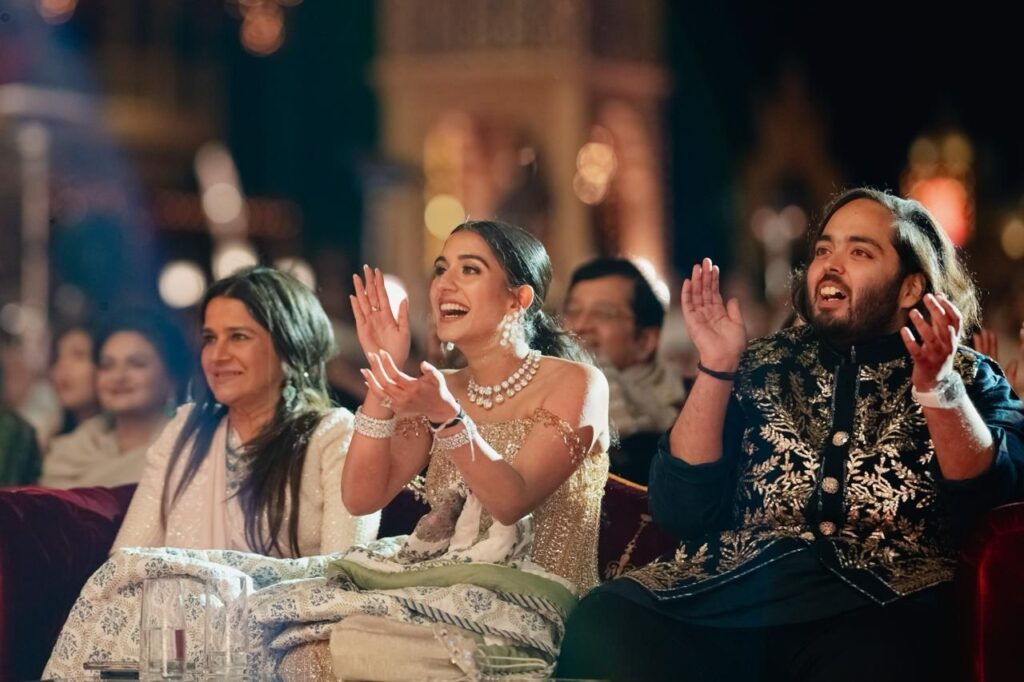
Because the rich and famous set the trends for the rest of society to follow, the culture of large and extravagant weddings can be toxic given the social pressure and unreal expectations it sets for couples and families, who sometimes take out loans to finance these events. In rural areas, the poor often incur substantial debt from hosting such weddings. Though social etiquette is changing in urban areas, traditionally wedding festivities are financed by the daughter’s family, and the marriage alliance depends both on the dowry given to the groom’s family and how well respected they feel during the festivities.
Failure to live up to expectations can have ramifications — the groom’s family could call off the wedding or demand more dowry from the bride’s side. Fights could ensue over something as little as not serving a desired dish, as happened recently in the southern state of Telangana in December when a wedding was called off because the bride’s side did not serve a mutton bone marrow dish at the party, which angered the groom’s family. This is why a daughter’s wedding is the costliest event in the life of an Indian family and a major cause of gender discrimination and femicide in the country.
However, as the celebrations ahead of the Ambani wedding expand the possibilities of what an Indian wedding can look like, one wonders about the limit. Can it be expanded further? If so, how much? Perhaps we’ll have to wait till July when Anant and Radhika’s nuptials take place. The bar has already been set.
“Spotlight” is a newsletter about underreported cultural trends and news from around the world, emailed to subscribers twice a week. Sign up here.



